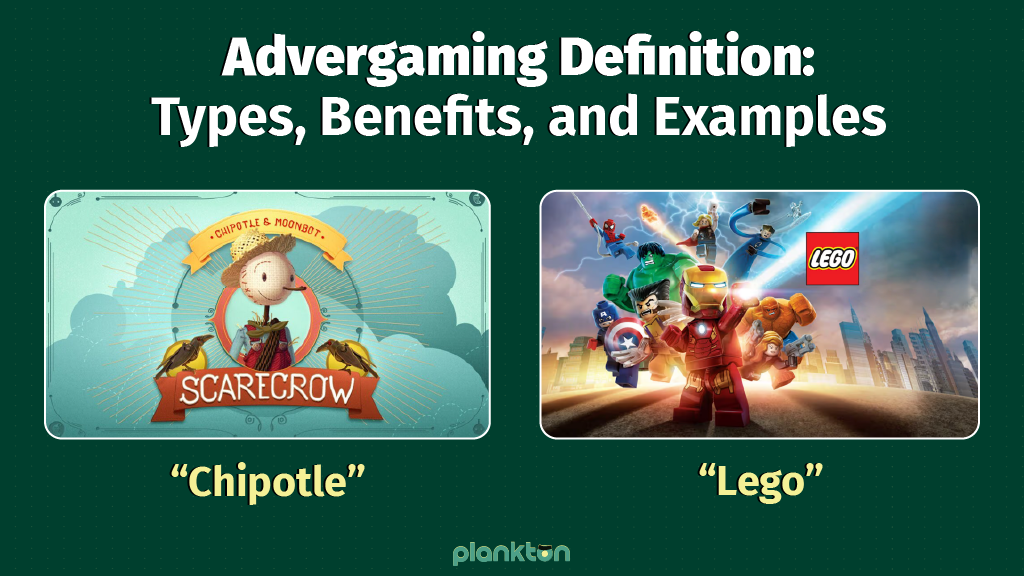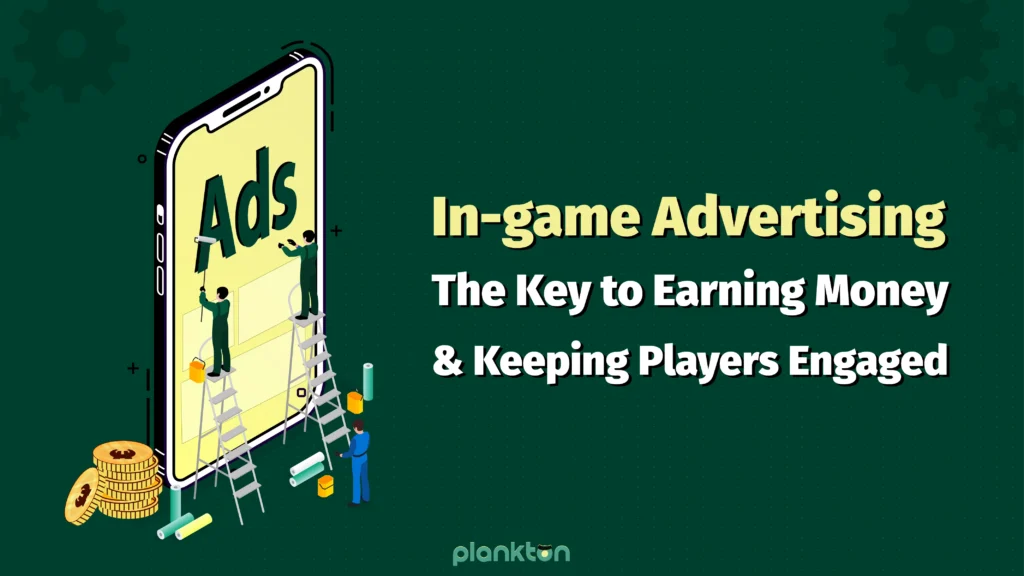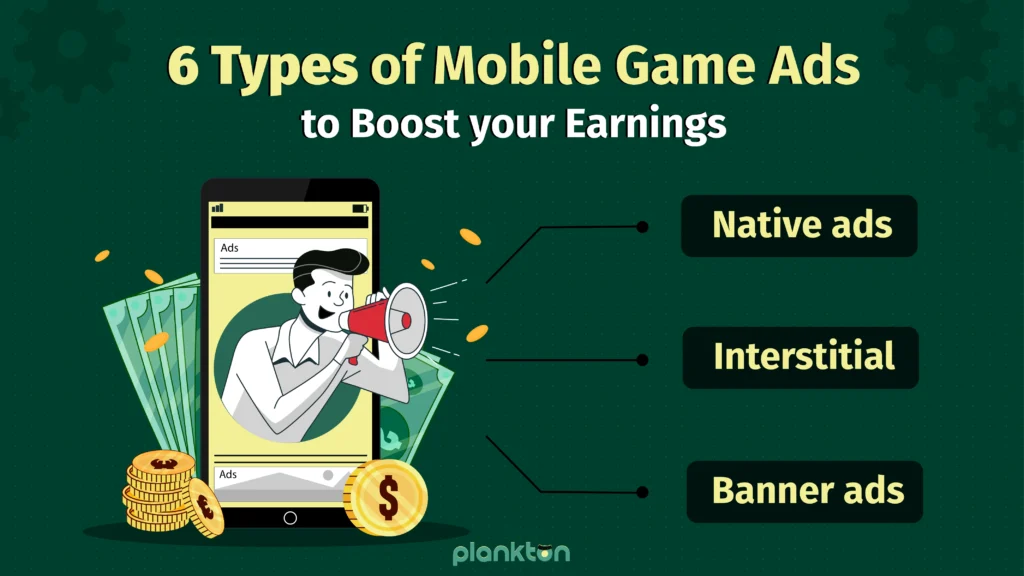Advergaming offers a unique way for brands to reach their audience through engaging, interactive experiences. Unlike traditional ads, advergames are fully designed to immerse players in a branded world, making them a powerful tool for storytelling.
In this post, we’ll break down what advergaming is, its key characteristics, and how some of the most well-known brands have used it to connect with players.
Whether you’re considering an advergame for your next campaign or just curious about how it works, keep reading to learn how this approach can enhance brand engagement in creative ways.
Advergaming Definition
Advergaming is indeed a game specifically designed to promote a brand or product. It’s a form of advertising where the entire game or key elements of it are built around the brand message.
These games are either branded from the ground up or integrate product placements and brand narratives into gameplay.
Unlike traditional advertising, advergaming invites active participation, making users part of the brand story instead of just observers.
The goal is to make the brand unforgettable.
In-Game Ads vs. Advergaming
In-game advertisments are passive placements, think billboards in a racing game or banners on the sidelines of a virtual football match.
While in-game ads feel like background noise, advergames offer the main stage to the brand, engaging users in a meaningful (and memorable) way.
What Makes an Advergame? Key Characteristics to Know
Advergames are designed to engage players while subtly promoting a brand. They stand out by blending entertainment with marketing, offering an interactive and immersive experience.
But what makes an advergame truly effective? Let’s explore the key characteristics that define these unique games.
Interactive
Advergames thrive on interactivity. Players aren’t just watching; they’re clicking, solving, competing, and progressing. This two-way engagement increases recall and makes users more likely to remember the brand behind the fun.
Immersive
The most successful advergames pull players into the brand’s world. From storyline to design, immersive experiences help users emotionally connect with the message, making it feel like an adventure, not an ad.
Targeted
Advergames can be crafted to resonate with specific demographics, interests, or user behaviors. Marketers can tailor game mechanics and aesthetics to fit the exact audience they want to reach.
Nostalgic
Many advergames borrow visual styles, soundtracks, or gameplay mechanics from retro games to stir up nostalgic emotions. This not only builds an emotional bridge but also makes users associate the warm fuzzies of childhood gaming with the brand.
Habit-forming
Through daily challenges, leaderboards, or rewards systems, advergames can tap into our natural desire for progression and competition. This repetition builds strong brand impressions and encourages users to return again and again.
Long-lasting (Longevity)
Unlike fleeting ads, a well-crafted advergame can stick around. It can be revisited, replayed, and even updated over time. That longevity means extended exposure, more touchpoints, and deeper customer connections.
Types of Advergaming
Advergames come in many shapes and sizes. Each type offers a different approach to brand promotion, so understanding the options can help marketers choose the best fit for their goals. Here are the main types of advergames:
-
Product Placement
This is the subtle version of advergaming, where branded items sneak into existing games. A soda can with a familiar logo? A branded car in a racing game? That’s product placement, integrated advertising that doesn’t interrupt gameplay but still leaves a mark.
-
Branded Games
These are full-blown games built entirely around a brand. Everything from the characters to the storyline to the objectives centers on the product or company. Think Magnum Pleasure Hunt, where the entire experience is a delicious chocolatey adventure wrapped in clever marketing.
-
Interactive Ads
These are playable ad formats, often seen in mobile games, where users can test-drive another game (usually sponsored) in exchange for in-game rewards. Though short, they’re highly engaging and let users experience before they buy.
-
Sponsorship Games
Here, brands team up with existing games or platforms to sponsor content or game modes. The brand isn’t necessarily baked into the game mechanics, but it’s present, like a company sponsoring a tournament or creating limited-edition content in collaboration.
-
Social Media Games
Designed to live and thrive on platforms like Instagram, Facebook, or TikTok, these games are often bite-sized and socially shareable. Whether it’s a filter-based game or a quiz-style challenge, the goal is viral visibility and peer-to-peer brand exposure.
-
VR & AR Games
With immersive tech like virtual and augmented reality, brands are building futuristic experiences that go beyond the screen.
-
Mini-Games
Quick, catchy, and often addictive, mini-games are great for embedding into apps, websites, or even email campaigns. They’re perfect for short attention spans and can drive engagement without overwhelming the user.
The Psychology Behind Advergaming
Advergaming isn’t just about flashy graphics or catchy sound effects, it’s rooted in deep psychological principles that keep users hooked and brands unforgettable. These games tap into how we think, feel, and behave, making the experience not just fun, but sticky.
Operant Conditioning
Advergames use rewards (like points, levels, or badges) to reinforce positive behaviors, making players want to keep coming back.
For example, a game might offer exclusive brand-related items as rewards, which keeps the player engaged and reinforces their connection with the brand.
Flow State
In advergames, the balance between challenge and skill is essential to achieving a ‘flow state.’ This keeps players immersed and less focused on the marketing message, making the brand integration feel more natural.
For example, when players are deeply engaged in the game’s challenge, they’re more likely to remember the brand embedded in the gameplay.
Social Proof
Leaderboards, community competitions, and shareable results all tap into our need to fit in and be recognized. When users see others playing (and loving) a branded game, they’re more likely to join in, creating a ripple effect of engagement.
Endowment Effect
The moment players earn or unlock something in a game, even a digital item, they start to value it more. Advergames that let users collect or customize branded items make the brand feel more personal and meaningful.
Reciprocity Principle
Give players a free, fun experience, and they’ll feel like giving back. Whether it’s signing up for a newsletter, watching a product demo, or even making a purchase, reciprocity turns goodwill into action.
Sunk Cost Fallacy
The more time players invest in a game, the harder it becomes to walk away. Advergames that require progression over time (levels, streaks, achievements) keep users engaged longer, deepening brand exposure as they chase that next win.
Advergaming Advantages and Disadvantages
Advergames offer several powerful benefits for brands. From increasing engagement to fostering long-term loyalty, these games go beyond simple promotion. Let’s explore the key advantages that make advergaming a smart choice for marketers.
Increasing Brand Awareness
Advergames are like virtual billboards, but way more fun. By placing your brand at the center of the game, users engage with it actively and repeatedly, which helps boost recognition without feeling like a traditional ad.
Boosting Engagement
Unlike passive ads, advergames demand attention and interaction. Players are clicking, strategizing, and exploring, all while immersed in your brand world. That kind of active engagement drives deeper memory and emotional impact.
Strengthening Customer Relationships
A well-designed advergame feels like a gift. It entertains, rewards, and connects with the player, fostering a sense of loyalty and goodwill. When a brand offers fun instead of a sales pitch, it builds lasting trust.
Driving Conversions & Sales
It’s not just about fun and games, advergaming can influence behavior. From in-game product trials to unlocking exclusive discounts, brands can nudge players toward real-world actions in subtle but powerful ways.
Aiding Lead Generation & Data Collection
Want to know what your audience loves? Their choices, behavior, and play patterns within the game can offer rich data insights. With consent, advergames can double as lead-gen tools, gathering emails, preferences, or even survey feedback.
Cost-Saving
Compared to massive ad campaigns or influencer partnerships, a single well-designed advergame can deliver long-term value. Once launched, it continues to engage without recurring costs, offering better ROI over time, especially if it goes viral.
Challenges of Advergaming
While advergames offer many advantages, they also come with their own set of challenges. From finding the right balance between fun and promotion to effectively tracking success, brands must navigate certain hurdles. Let’s dive into the main challenges of advergaming.
- High Development Costs: Creating a quality game isn’t cheap, it takes time, talent, and tech.
- Requires Creativity and Promotion: You need more than a cool concept. Without a smart promo strategy, even great games can flop.
- Ad Blocking: Some platforms or users might block interactive ads, limiting reach.
- Low ROI Risks: If the game doesn’t land with users, the investment may not pay off.
- Not Suitable for Every Product: Not every brand or audience will vibe with gaming, know your fit.
- Risk of Being Too Salesy: Over-promotion can ruin the fun, making users feel manipulated.
- Negative Publicity: A poorly made or tone-deaf game can backfire fast.
- Low Retention: Initial interest is easy; keeping players coming back is the real challenge.
Advergaming Examples
Here is a short advergaming list that demonstrates how brands use interactive experiences to engage audiences and reinforce their messages.
Keep in mind, most advergames are tied to a specific campaign or product, so it’s normal that some may no longer be available to players.
Lego Mobile Games
Lego uses advergames to blend creativity and marketing, offering free mobile apps and online games that promote Lego products while keeping kids engaged. These games integrate physical Lego sets with digital play, encouraging ongoing interaction with the brand.
Example: Lego Super Mario
Key Features:
- Free & Accessible: Easy to download, with no barriers to entry.
- Brand Integration: Features Lego’s product lines and licensed content like Star Wars.
- AR & Digital Play: Games like Lego Super Mario mix physical bricks with digital fun.
- Safe & Ad-Free: Focuses on Lego’s own products in a child-friendly environment.
Why It Works:
Lego’s mobile advergames foster creativity and emotional connection, encouraging brand loyalty and product purchases while keeping kids safe and engaged in a digital space.
Doritos VR Battle
Launched in 2016 as part of the #PlayBold campaign, Doritos VR Battle is a virtual reality game developed by Capitola VR.
Designed for young, tech-savvy audiences, it immerses players in a high-energy world inspired by retro graphics, where they collect Doritos, battle monsters, and dodge obstacles.
Even though it’s not a mobile game, it follows the same idea—using a video game to build hype around a product or brand.
Key Features:
- Immersive Gameplay: Players navigate a bold, action-packed world that reflects Doritos’ adventurous brand personality.
- Influencer Marketing: The campaign featured videos from popular gamers, racking up millions of views.
- Branded Experience: Every element of the game ties back to Doritos, reinforcing brand identity without traditional ads.
Why It Works:
Doritos VR Battle successfully merged brand storytelling with gaming culture. By delivering a fully branded experience that felt more like entertainment than advertising, the campaign generated buzz, built brand affinity, and stood out as a memorable example of immersive marketing.
Chipotle’s “The Scarecrow” Advergame
Launched in 2013, Chipotle’s “The Scarecrow” advergame was part of their “Food With Integrity” campaign, designed to raise awareness about sustainable food sourcing. Developed by Moonbot Studios, the game was available for free on iOS devices and was paired with an animated short film.
In the game, players control a scarecrow battling against the industrial food giant “Crow Foods,” representing processed food. Players rescue animals, protect crops, and deliver fresh food while avoiding obstacles like “Crowbots.” The gameplay reinforces Chipotle’s message about sustainable, ethically sourced ingredients.
Key Features:
- Marketing Integration: The game was part of a broader campaign, combining viral videos and interactive experiences to connect with Millennials.
- Incentives: Players could earn real-world rewards like free food for achieving high scores.
- Impact: The game had over 300,000 downloads in its first five days and millions of YouTube views for the film.
With its engaging narrative and interactive mechanics, “The Scarecrow” showed how advergaming could effectively communicate a brand’s values while entertaining players.
How to Create & Implement Advergames
Creating a successful advergame goes beyond just building a fun experience. It’s about strategically integrating your brand while keeping players hooked. From defining clear goals to fine-tuning the gameplay, there are several key steps to follow.
- Set Clear Objectives
Are you aiming for brand awareness? Lead generation? Sales?
Start with the end in mind.
- Know Your Audience
Who are you building this for? What platforms do they use?
Your game should feel like it was made just for them.
- Balance Fun & Branding
Make it enjoyable and on-brand.
Too much sales? Game over. Too little branding? Missed opportunity.
- Keep Gameplay Simple
Easy to start. Hard to quit.
Avoid complexity, focus on sticky mechanics.
- Market the Game Like a Product
Launch it, tease it, promote it.
A great game needs a great campaign too.
- Build a Community
Add leaderboards, sharing options, or events.
Let your players feel seen, and keep them coming back.
- Invest in Good Design
Bugs and clunky UX = brand damage.
Polish is key to credibility.
- Track & Improve
Use analytics to refine gameplay and messaging.
Your second version should always be better.
- Watch the ROI
Keep an eye on performance metrics.
Fun is great, but results matter too.
The Future of Advergaming
The future of advergaming looks incredibly exciting as technology continues to evolve. With advancements in technology, advergames are set to become more personalized and immersive, offering deeper connections with players.
Advancements in Technology
With AI, AR, and VR evolving fast, advergames will become even more personalized, immersive, and emotionally intelligent.
Role of Analytics
Data will drive smarter games, tracking user behavior to optimize engagement and ROI in real time.
Growing Significance in a Digitized World
As traditional ads lose their grip, brands will lean on gamified experiences to build loyalty, stand out, and entertain in a crowded digital landscape.
Wrap Up
Advergaming is no longer just a creative experiment, it’s a full-fledged strategy reshaping the future of digital marketing. By blending immersive gameplay with targeted branding, it offers businesses a unique way to connect with audiences on a deeper, more emotional level.
While it comes with its own set of challenges, the potential rewards, from boosted engagement to stronger brand loyalty, make it a compelling avenue worth exploring.
As technology continues to evolve, so will the ways we play, interact, and advertise. So if you’re ready to level up your marketing strategy, it might be time to stop interrupting the game, and start being the game.



